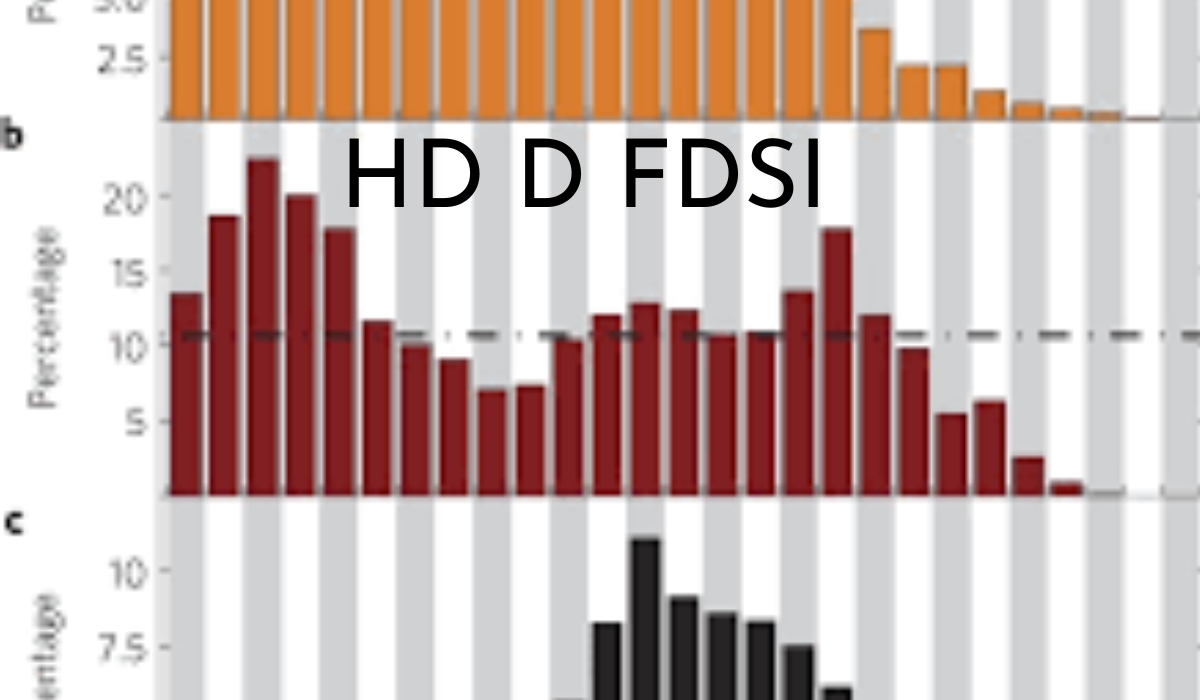Technology
Jaart011-Mysteries of the Digital Age: Impact, Challenges, and Future Trends

Welcome to the thrilling realm of the Digital Age, where innovation and technology intertwine to shape our world like never before. From the evolution of computers to the dominance of smartphones, this era has revolutionized how we live, work, and interact with one another. Join us on a journey as we unveil the intriguing mysteries that define jaart011 – a time marked by both awe-inspiring advancements and daunting challenges in equal measure.
The Evolution of Technology Jaart011: From Computers to Smartphones
Technology has come a long way since the days of bulky computers that took up entire rooms. The evolution from those early machines to the sleek smartphones we carry in our pockets today is nothing short of remarkable.
Computers revolutionized how we work, communicate, and access information. They paved the way for advancements in various industries and changed the world as we knew it. As technology continued to progress, so did our devices.
The introduction of smartphones brought computing power right to our fingertips. These pocket-sized marvels are not just tools for communication but also serve as cameras, music players, GPS systems, and personal assistants. The convenience they offer is unparalleled.
With each iteration, technology becomes more integrated into our daily lives. It’s fascinating to see how far we’ve come and exciting to think about what the future holds in terms of technological innovation.
The Dark Side of the Digital World: Cyber Crimes and Privacy Concerns
The Dark Side of the Digital World: Cyber Crimes and Privacy Concerns
In the vast landscape of the digital world, lurking in the shadows are cybercriminals who harness technology for malicious purposes. These individuals exploit vulnerabilities in systems to steal sensitive information or disrupt operations, causing chaos and financial loss.
Privacy concerns have become a pressing issue as personal data is collected, shared, and sometimes misused without consent. From online tracking to data breaches, individuals are increasingly at risk of having their privacy invaded in ways they may not even realize.
Phishing scams, ransomware attacks, and identity theft are just some examples of cybercrimes that can wreak havoc on both individuals and organizations. The constant evolution of technology provides new avenues for these threats to manifest, making it crucial for everyone to stay vigilant and informed about cybersecurity best practices.
As society becomes more reliant on digital platforms for communication, shopping, banking, and more.
The Role of Social Media in Shaping Culture and Relationships
Social media has undeniably become a powerful force in shaping modern culture and relationships. Platforms like Facebook, Instagram, Twitter, and TikTok have revolutionized how we connect with others and express ourselves. From viral challenges to influencer trends, social media influences what we wear, eat, listen to, and even our political beliefs.
The rise of social media has blurred the lines between online and offline interactions. Friendships can now start with a DM or a comment on a post. Relationships are publicly displayed through couple photos and status updates. However, this constant connectivity comes with its own set of challenges – from comparison traps to cyberbullying.
On the flip side, social media also serves as a platform for activism and awareness campaigns. Movements like #MeToo and Black Lives Matter have gained momentum through online conversations. Social media has the power to amplify marginalized voices and spark meaningful change in society.
As technology continues to evolve rapidly, it’s crucial to understand the impact of social media on our culture and relationships. Finding balance between digital connection and real-life experiences is key to navigating this ever-changing landscape effectively.
The Positive Influence of Digital Technology in Various Industries
Digital technology has revolutionized various industries, sparking innovation and efficiency like never before. In the healthcare sector, telemedicine has enabled remote consultations and improved access to medical expertise. Patients can now receive care from anywhere, breaking down geographical barriers.
In the education field, e-learning platforms have transformed traditional teaching methods. Students can access a wealth of information online and engage in interactive learning experiences. This shift towards digital education has made learning more accessible and personalized.
The entertainment industry has been greatly impacted by digital technology through streaming services and virtual reality experiences. Consumers now have endless options for entertainment at their fingertips, changing how content is created and consumed.
Businesses have embraced digital tools for marketing, communication, and operations management. The use of data analytics has allowed companies to make informed decisions based on real-time insights, leading to increased productivity and profitability.
The positive influence of digital technology across various industries continues to shape the way we work, learn, entertain ourselves, and receive essential services.
Ethical Dilemmas and Debates in the Digital Age
In the ever-evolving landscape of the Digital Age, ethical dilemmas and debates have become increasingly prevalent. One pressing concern is the issue of data privacy and how companies handle personal information. Are we sacrificing our privacy for convenience? Another hotly debated topic is the spread of misinformation online – who should be responsible for fact-checking in a world where anyone can publish content?
The rise of artificial intelligence has sparked discussions on job displacement and ethical AI use. Should machines make life-altering decisions, or should humans always have the final say? Additionally, there’s ongoing discourse around social media algorithms shaping our beliefs and behaviors. Are we being fed personalized content that reinforces our existing biases?
As technology continues to advance at a rapid pace, it’s crucial to address these ethical quandaries with thoughtfulness and foresight. Finding a balance between innovation and ethics will be key as we navigate the complexities of this digital era.
Predictions for the Future of Technology
As we stand on the brink of a new era, the future of technology appears both thrilling and daunting. With rapid advancements in artificial intelligence and automation, our world is poised for unprecedented changes. The integration of virtual reality and augmented reality could revolutionize how we experience entertainment, education, and even work environments.
The rise of quantum computing promises to unlock possibilities that were once unimaginable, from solving complex problems in seconds to enhancing cybersecurity measures. Innovations in biotechnology may lead to groundbreaking discoveries in healthcare treatments and personalized medicine.
However, alongside these marvels come pressing concerns about data privacy, ethical implications of AI decision-making, and potential job displacement due to automation. As we navigate this uncharted territory, it’s crucial for society to prioritize ethical considerations while embracing the transformative power of technology.
How to Embrace and Navigate
Embracing and navigating the digital age can be both exciting and daunting. To thrive in this ever-evolving landscape, it’s essential to stay curious and open-minded. Be willing to learn new technologies and adapt to changing trends.
One key strategy is to prioritize cybersecurity. Safeguard your personal information by using strong passwords, enabling two-factor authentication, and being cautious of phishing attempts. Stay informed about the latest cyber threats to protect yourself online.
Another crucial aspect is managing screen time effectively. Set boundaries for technology use, take regular breaks from screens, and prioritize real-world connections. Balance is key in maintaining a healthy relationship with digital devices.
Seek out opportunities for continuous learning and skill development in technology-related fields. Stay curious, explore new tools and platforms, and embrace lifelong learning as a way to stay relevant in the digital age.
Networking with like-minded individuals can also provide valuable insights and support in navigating the complexities of the digital world. Engage with online communities, attend webinars or workshops, and collaborate on projects to expand your knowledge base.
Remember that embracing the digital age is not just about keeping up with the latest gadgets; it’s about cultivating a mindset of adaptability, resilience, and curiosity in an increasingly interconnected world.
YOU MAY ALSO LIKE
GalenMetzger1: Visionary Artist Redefining Contemporary Art
CONCLUSION
As we dive deeper into the intriguing mysteries of the digital age, one thing becomes clear – the landscape of technology is ever-evolving. With each passing day, new innovations shape our world in ways we never thought possible. From the early days of computers to the now omnipresent smartphones, our reliance on digital devices has become a fundamental aspect of modern life.
However, this rapid advancement hasn’t come without its challenges. Cybercrimes and privacy concerns loom large in the digital realm, reminding us of the dark side that accompanies technological progress. The power of social media cannot be ignored either, as it plays a pivotal role in shaping culture and relationships across the globe.
Despite these obstacles, there is no denying the positive impact digital technology has had on various industries. From healthcare to education to entertainment, innovation continues to drive growth and efficiency like never before.
Yet with great power comes great responsibility. Ethical dilemmas and debates surrounding data privacy and AI ethics are at the forefront of discussions within tech communities worldwide.
Looking ahead, predictions for the future of technology are both exciting and uncertain. How will artificial intelligence continue to revolutionize industries? What new advancements will redefine how we interact with our devices?
In a constantly evolving digital landscape, embracing change while navigating its complexities is key to staying informed and empowered in this fast-paced world.
FAQS
1. How has the Digital Age impacted society?
The Digital Age has revolutionized the way we live, work, and communicate. It has facilitated instant access to information, transformed industries, and reshaped social interactions.
2. What are some common cyber crimes in the digital world?
Common cyber crimes include hacking, phishing scams, identity theft, malware attacks, and ransomware incidents. It is crucial to stay vigilant and protect your online presence.
3. What ethical dilemmas arise in the digital age?
Ethical debates often revolve around data privacy issues, algorithm biases, online harassment policies, artificial intelligence ethics, and the impact of technology on job displacement.
4. How can individuals embrace digital technology while safeguarding their privacy?
One can embrace digital technology by being mindful of sharing personal information online, using secure passwords and encryption tools, regularly updating software for security patches.
5. What does the future hold for technology advancements?
The future of technology is exciting yet uncertain as innovations like AI,
Internet of Things (IoT), virtual reality continue to evolve rapidly; it’s essential to adapt to these changes thoughtfully while considering their implications on society.
Technology
Effective Techniques for Soil Stabilization in Construction Projects

Importance of Soil Stabilization
Soil stabilization is a cornerstone in numerous construction projects aimed at enhancing the engineering properties of soil. This crucial process involves various techniques to increase the soil’s shear strength, decrease the potential for volume change, and ultimately bolster the ground’s load-bearing capacity. The necessity for proper soil stabilization becomes starkly evident when considering the potential pitfalls of neglect. Without stabilization, structures risk significant issues such as excessive settlement and foundation failures, potentially leading to hazardous conditions and skyrocketing costs for repairs and modifications. Ensuring stable ground conditions is not just about safety; it’s about ensuring project longevity and financial prudence.
For instance, plate and frame rental services can be highly beneficial in scenarios where temporary yet robust solutions are needed. These services provide practical support in stabilizing the construction site effectively, ensuring that the groundwork remains firm and dependable. Integrating such efficient methods right from the start preempts many common issues faced during and after construction, thus optimizing both safety and financial outcomes.
Standard Methods of Soil Stabilization
Various methods are available to stabilize soil, each tailored to address specific challenges and project requirements. Here are three prevalent techniques:
- Mechanical Stabilization: This method involves physical compaction and densification using heavy machinery such as rollers and compactors. Mechanically raising the soil’s density increases its load-bearing capacity, making it a quick and practical solution for many projects.
- Chemical Stabilization: This technique uses chemical additives like lime, cement, or fly ash to alter the soil’s chemical properties, enhancing its strength and durability. Chemical stabilization is particularly effective for soils with high clay content, prone to swelling and shrinking with moisture changes.
- Geosynthetics: This modern method uses synthetic materials, such as geotextiles and geogrids, to enhance soil properties. Geosynthetics provide structural support, improve drainage, and can significantly extend the lifespan of the stabilized soil.
Pros and Cons of Each Method
Understanding the advantages and disadvantages of every soil stabilizing method is essential for making a well-informed decision:
- Mechanical Stabilization: Pros – Offers immediate improvement in soil strength, is relatively straightforward to implement, and does not involve chemical alterations. Cons – High equipment and labor costs, and its effectiveness may be limited in very loose or sandy soils.
- Chemical Stabilization: Pros – Provides long-term stability and resistance to moisture changes, is highly effective for problematic clays, and can significantly increase soil strength. Cons – Higher material costs, potential environmental concerns due to chemical use, and requires expert application.
- Geosynthetics: Pros—They are Versatile in their application, practical in various soil conditions, enhance drainage, and prevent erosion. Cons—They can be expensive due to material costs, and installation can be complex, requiring specialized knowledge.
Application in Different Soil Types
Different soil types present unique challenges and opportunities for stabilization. Expansive clays, which swell and shrink with moisture variations, benefit greatly from chemical stabilization methods. Lime or cement can significantly enhance the properties of such soils, making them more stable and less prone to volume changes. On the other hand, Sandy soils might interact less effectively with chemical additives. In such cases, mechanical stabilization or geosynthetics can provide the necessary support and improvement. Evaluating site-specific soil characteristics and conditions is crucial for selecting the most effective stabilization technique, ensuring optimal project outcomes.
Innovative Techniques and Technologies
The soil stabilization field is rapidly evolving, with continuous research driving innovations and technologies. Nanomaterials, for example, are being explored for their ability to enhance soil properties at a microscopic level significantly. Enzymes and biopolymers are also gaining attention due to their potential to offer sustainable and cost-effective solutions. These biological-based stabilizers can improve soil cohesion and strength without the environmental drawbacks associated with traditional chemicals. The construction industry can achieve more efficient, environmentally friendly, and economically viable soil stabilization by embracing these innovative techniques.
Environmental and Economic Impacts
Soil stabilization carries profound environmental and economic benefits. Environmentally, effective stabilization prevents soil erosion, reduces runoff, and minimizes the risk of landslides, thus protecting surrounding ecosystems. Economically, stabilized soils lead to fewer construction delays, increased project efficiency, and extended infrastructure longevity, translating into significant cost savings over time. Implementing eco-friendly practices in soil stabilization is aligned with sustainable development goals. For a comprehensive understanding, the study on sustainable construction practices provides an in-depth analysis of how sustainability can be integrated into construction projects, including soil stabilization.
Future Trends in Soil Stabilization
The future of soil stabilization appears promising, with ongoing research and technological advancements poised to revolutionize the industry. Emerging trends include the increased use of eco-friendly materials, such as recycled and waste materials, which can be utilized for soil stabilization without causing environmental harm. Additionally, integrating intelligent technologies, such as sensors and monitoring systems, allows for real-time assessment of soil conditions and performance, enabling proactive adjustments and optimizations. These advancements are expected to make soil stabilization more efficient, sustainable, and cost-effective, ensuring that construction projects are resilient and environmentally responsible in the coming years.
Technology
Unveiling the Barcode technology : Understanding Perfume Identification through Codigo de Barra perfume

In the realm of consumer goods, the barcode serves as a silent but powerful identifier, carrying essential information about products. Among these, perfume bottles, adorned with intricate designs and captivating scents, often feature barcodes, connecting the world of fragrance to the realm of logistics and retail. In this comprehensive exploration, we delve into the significance of the barcode in the perfume industry, focusing particularly on the term “codigo de barra perfume” (barcode perfume). From its inception to its implications in marketing and supply chain management, we unravel the layers of this seemingly simple yet profoundly influential aspect of perfume identification.
1. Origins and Evolution of Barcoding Technology
The history of barcodes dates back to the early 20th century, with the first patent for a barcode system filed in 1949 by Norman Joseph Woodland and Bernard Silver. However, it wasn’t until the 1970s that barcodes gained widespread adoption, particularly with the advent of the Universal Product Code (UPC) in 1974. This revolutionary system standardized product identification and streamlined retail operations, laying the groundwork for modern barcode technology.
Since then, barcoding technology has evolved significantly, with various symbologies and formats catering to different industries and applications. In the realm of perfumery, the barcode plays a crucial role in product identification, inventory management, and sales tracking. The código de barras perfume serves as a unique identifier, enabling seamless integration into supply chain systems and enhancing the efficiency of retail operations.
2. The Role of Barcodes in codigo de barra perfume
Within the perfume industry, each fragrance undergoes a meticulous production process, from formulation to bottling and packaging. Throughout this journey, the codigo de barra perfume serves as a key identifier, linking each product to its corresponding information in the database. This information may include details such as the fragrance name, brand, bottle size, batch number, and manufacturing date.
The barcode not only facilitates efficient inventory management but also enables accurate tracking of product movements across various stages of the supply chain. From the manufacturer’s warehouse to retail shelves, each barcode scan provides valuable insights into stock levels, sales performance, and consumer preferences.
Moreover, the codigo de barra perfume plays a vital role in counterfeit detection and brand protection. By implementing unique barcode systems with advanced authentication features, perfume manufacturers can safeguard their products against illicit reproduction and unauthorized distribution.
3. Marketing Implications of Barcode Integration
In addition to its operational benefits, the código de barras perfume holds significant implications for marketing and consumer engagement. With the rise of omnichannel retail and digital marketing strategies, barcodes serve as conduits for seamless integration between offline and online channels.
For instance, QR codes, a type of two-dimensional barcode, enable direct engagement with consumers through interactive experiences such as product tutorials, virtual fragrance trials, and loyalty programs. By scanning the codigo de barra perfume, shoppers can access detailed product information, user reviews, and personalized recommendations, enriching their shopping experience and fostering brand loyalty.
Furthermore, barcode data analytics empower perfume brands to gain valuable insights into consumer behavior, preferences, and trends. By analyzing barcode scans and purchase patterns, marketers can optimize product assortments, pricing strategies, and promotional campaigns, driving revenue growth and market expansion.
4. Supply Chain Optimization and Transparency
Beyond the realms of marketing and consumer engagement, the código de barras perfume contributes to supply chain optimization and transparency. Through barcode-enabled traceability systems, perfume manufacturers can track the journey of raw materials from source to finished product, ensuring compliance with quality standards and regulatory requirements.
By leveraging barcode data, supply chain stakeholders can identify bottlenecks, optimize inventory levels, and enhance production efficiency. Real-time visibility into product movements enables proactive decision-making, reducing lead times and minimizing the risk of stockouts or overstock situations.
Moreover, the codigo de barra perfume facilitates transparency and accountability throughout the supply chain. By sharing barcode data with consumers, brands can demonstrate their commitment to ethical sourcing, sustainability, and product authenticity. This transparency not only builds trust with consumers but also fosters a sense of accountability across the industry.
5. Future Trends and Innovations
Looking ahead, the future of barcode technology in the perfume industry is ripe with possibilities. Advancements in data analytics, artificial intelligence, and Internet of Things (IoT) are poised to transform the way barcodes are utilized, unlocking new opportunities for innovation and differentiation.
For instance, smart packaging solutions embedded with RFID (Radio Frequency Identification) tags and NFC (Near Field Communication) technology offer enhanced functionality beyond traditional barcodes. These intelligent tags enable real-time tracking, authentication, and interactive experiences, bridging the physical and digital realms in novel ways.
Furthermore, blockchain technology holds promise for enhancing the transparency and security of supply chain operations. By immutably recording barcode data on a decentralized ledger, blockchain enables end-to-end traceability and verifiable provenance, mitigating the risk of counterfeit products and ensuring consumer safety.
Conclusion
In the intricate tapestry of the perfume industry, the codigo de barra perfume emerges as a silent yet indispensable thread, weaving together the realms of production, distribution, and consumption. From its humble origins to its multifaceted roles in marketing, supply chain management, and consumer engagement, the barcode embodies the evolution of technology and commerce in the pursuit of fragrance perfection.
As we reflect on the journey of the codigo de barra perfume, it becomes evident that its significance transcends mere product identification. It serves as a conduit for innovation, efficiency, and transparency, enabling perfume brands to navigate the complexities of a dynamic marketplace with agility and insight.
Looking ahead, the future of barcode technology in the perfume industry holds boundless potential. With advancements in data analytics, artificial intelligence, and blockchain, we stand at the cusp of a new era of connectivity and empowerment. Smart packaging solutions, enhanced traceability, and immersive consumer experiences promise to redefine the boundaries of what is possible, reshaping the landscape of fragrance commerce in profound ways.
In this ever-evolving landscape, one thing remains constant—the codigo de barra perfume will continue to serve as a symbol of progress and possibility, connecting brands with consumers in ways that transcend language and culture. As we embark on this journey of innovation and discovery, let us embrace the power of the barcode to inspire, inform, and elevate the world of perfume to new heights of excellence.
YOU MAY ALSO LIKE;
Exploring the Intechzoom Rolex Submariner: A Comprehensive Guide
Frequently Asked Questions (FAQs)
- What information is encoded in a perfume barcode?
- A perfume barcode typically contains details such as the fragrance name, brand, bottle size, batch number, and manufacturing date.
- How do barcodes help in combating counterfeit perfumes?
- Barcodes enable authentication and traceability, allowing brands to detect counterfeit products and safeguard against unauthorized distribution.
- Can consumers interact with perfume barcodes?
- Yes, through technologies like QR codes, consumers can access product information, reviews, and personalized experiences by scanning perfume barcodes.
- What role do barcodes play in supply chain management?
- Barcodes facilitate inventory management, product tracking, and transparency throughout the perfume supply chain, optimizing operations and reducing costs.
- Are there emerging barcode technologies revolutionizing the perfume industry?
- Yes, advancements in RFID, NFC, and blockchain offer innovative solutions for enhanced traceability, security, and consumer engagement in the perfume sector.
Technology
The Ultimate Guide to Understanding HD D FDSI: What It Is and Why It Matters

Introduction: Unveiling the Mystery of HD D FDSI
In the ever-evolving landscape of technology and innovation, new terms and acronyms seem to emerge constantly. One such term that might have caught your attention is “HD D FDSI.” But what exactly does it mean? In this comprehensive guide, we’ll delve deep into the world of HD D FDSI, exploring its significance, applications, and implications. Whether you’re a tech enthusiast, a curious learner, or someone looking to stay ahead of the curve, this article is for you.
Understanding HD D FDSI: Deciphering the Acronym
Let’s start by breaking down the acronym “HD D FDSI” into its constituent parts:
- HD: This commonly stands for “High Definition,” typically referring to a higher resolution or quality in visual content, such as images or videos.
- D: While the standalone “D” doesn’t have a universal definition in this context, it could possibly signify “Digital” or “Data.”
- FDSI: This part of the acronym might be less familiar but could potentially represent a specific technology, protocol, or system.
Combining these elements, HD D FDSI likely pertains to a technology or standard related to high-definition digital data or imagery. However, to gain a clearer understanding, let’s explore further.
Exploring the Significance of HD D FDSI: Why Does It Matter?
HD D FDSI holds significance across various industries and applications:
- Visual Entertainment: In the realm of entertainment and media, HD D FDSI may relate to advancements in high-definition video formats, enhancing the viewing experience for consumers.
- Medical Imaging: Within the medical field, high-definition digital imaging technologies play a crucial role in diagnoses, surgeries, and treatment planning. HD D FDSI could represent a cutting-edge imaging standard or technique.
- Surveillance and Security: Security systems rely heavily on high-definition digital imagery for monitoring and analysis. HD D FDSI might involve innovations in surveillance technology, improving accuracy and reliability.
- Industrial Applications: Industries such as manufacturing and engineering utilize high-definition digital data for design, analysis, and quality control purposes. HD D FDSI may introduce advancements in industrial imaging or sensing.
The Evolution of HD D FDSI: Tracing Its Origins and Development
To grasp the full scope of HD D FDSI, it’s essential to explore its evolutionary journey:
- Origins: HD D FDSI likely stems from the convergence of digital technology, data processing, and imaging systems. Its origins may be traced back to the development of high-definition standards and digital imaging protocols.
- Technological Advancements: Over time, HD D FDSI has likely undergone significant advancements, driven by innovations in hardware, software, and data processing algorithms. These advancements may have led to improvements in resolution, clarity, and efficiency.
- Industry Adoption: Various industries have embraced HD D FDSI for its potential to enhance productivity, accuracy, and innovation. From entertainment giants to medical institutions, the adoption of high-definition digital imaging is widespread.
Applications of HD D FDSI: Real-World Use Cases
HD D FDSI finds applications across a diverse range of fields and industries:
- Broadcasting and Media Production: Television networks, film studios, and content creators leverage HD D FDSI for producing high-quality visual content, enriching the viewer experience.
- Medical Diagnostics: Radiologists, surgeons, and healthcare professionals utilize HD D FDSI for precise imaging and diagnosis of medical conditions, leading to improved patient outcomes.
- Security and Surveillance: Law enforcement agencies, airports, and commercial establishments rely on HD D FDSI for effective surveillance, threat detection, and crime prevention.
- Engineering and Design: Engineers, architects, and designers incorporate HD D FDSI into their workflows for detailed analysis, modeling, and prototyping of structures and products.
Challenges and Considerations in HD D FDSI Implementation
Despite its potential benefits, the adoption of HD D FDSI may present certain challenges:
- Cost: Implementing HD D FDSI systems and technologies can involve significant upfront costs, including hardware, software, and infrastructure investments.
- Compatibility: Ensuring compatibility and interoperability with existing systems and standards is crucial for seamless integration of HD D FDSI solutions.
- Data Management: Managing large volumes of high-definition digital data requires robust storage, processing, and retrieval capabilities, posing challenges in data management and archiving.
Future Trends and Innovations in HD D FDSI
Looking ahead, the future of HD D FDSI holds promise for continued innovation and evolution:
- Advancements in Resolution: Expect further improvements in resolution, clarity, and detail, enabling even higher-definition imaging and visualization.
- Integration with AI and ML: The integration of artificial intelligence (AI) and machine learning (ML) technologies will enhance the capabilities of HD D FDSI systems, enabling automated analysis, interpretation, and decision-making.
- Expansion into New Domains: HD D FDSI is likely to expand into new domains and industries, unlocking novel applications and opportunities for innovation.
- YOU MAY ALSO LIKE. Unlocking the Power of Data Visualization: How Heat Maps Can Transform Your Analytics
Conclusion: Navigating the World of HD D FDSI
In conclusion, HD D FDSI represents a fascinating intersection of high-definition digital imaging, data processing, and technological innovation. Whether it’s revolutionizing entertainment, healthcare, security, or engineering, the impact of HD D FDSI is undeniable. By understanding its significance, applications, and future trends, we can navigate the ever-changing landscape of technology with confidence and curiosity. Embrace the possibilities of HD D FDSI and embark on a journey of discovery and innovation in the digital realm.
FAQS.
- What does HD D FDSI stand for?
- HD D FDSI likely stands for “High Definition Digital Full-Frame Digital Imaging.” It represents a technology or standard related to high-definition digital data or imagery, encompassing advancements in resolution, clarity, and detail in visual content.
- Where is HD D FDSI used?
- HD D FDSI finds applications across various industries, including entertainment, healthcare, security, and engineering. It is used in broadcasting and media production, medical diagnostics, security and surveillance systems, as well as engineering and design workflows.
- How does HD D FDSI benefit industries?
- HD D FDSI offers several benefits to industries, including enhanced visual quality, improved accuracy in diagnostics and analysis, increased security and surveillance capabilities, and advanced design and modeling capabilities. It enables industries to achieve higher levels of productivity, efficiency, and innovation.
- What are the challenges of implementing HD D FDSI?
- Implementing HD D FDSI systems may pose challenges such as initial costs for hardware, software, and infrastructure, ensuring compatibility with existing systems and standards, and managing large volumes of high-definition digital data effectively. Overcoming these challenges requires careful planning, investment, and expertise.
- What are the future trends in HD D FDSI?
- The future of HD D FDSI is expected to witness advancements in resolution, integration with artificial intelligence (AI) and machine learning (ML) technologies for automated analysis and decision-making, as well as expansion into new domains and industries. These trends will further enhance the capabilities and applications of HD D FDSI in the digital landscape.
-

 Technology5 months ago
Technology5 months agoEnhancing Cybersecurity: Understanding SIEM and Its Impact on Threat Management
-

 Travel7 months ago
Travel7 months agoThe Back Bay Station: Exploring the Heart of Boston
-

 News5 months ago
News5 months agoMcDonald’s New Adult Happy Meal: A Unique Twist for All Ages
-

 Travel5 months ago
Travel5 months agoRefining Your Travel Adventures within Budget: Intelligent Tactics for Astute Explorers
-

 Technology5 months ago
Technology5 months agoUnveiling Geöe: The Leading Edge in Sustainable Solutions for 2024 and Beyond
-

 Blog4 months ago
Blog4 months agoThe Spartan Integrity: An In-Depth Look at Spartan Capital Securities LLC broker jordan meadow and Its Path Forward
-

 Travel7 months ago
Travel7 months agoExecutive Large Office Moving Services Sherman Oaks
-

 Fashion7 months ago
Fashion7 months agoNike Tech Fleece Explained: Unveiling the Comfort Revolution






















